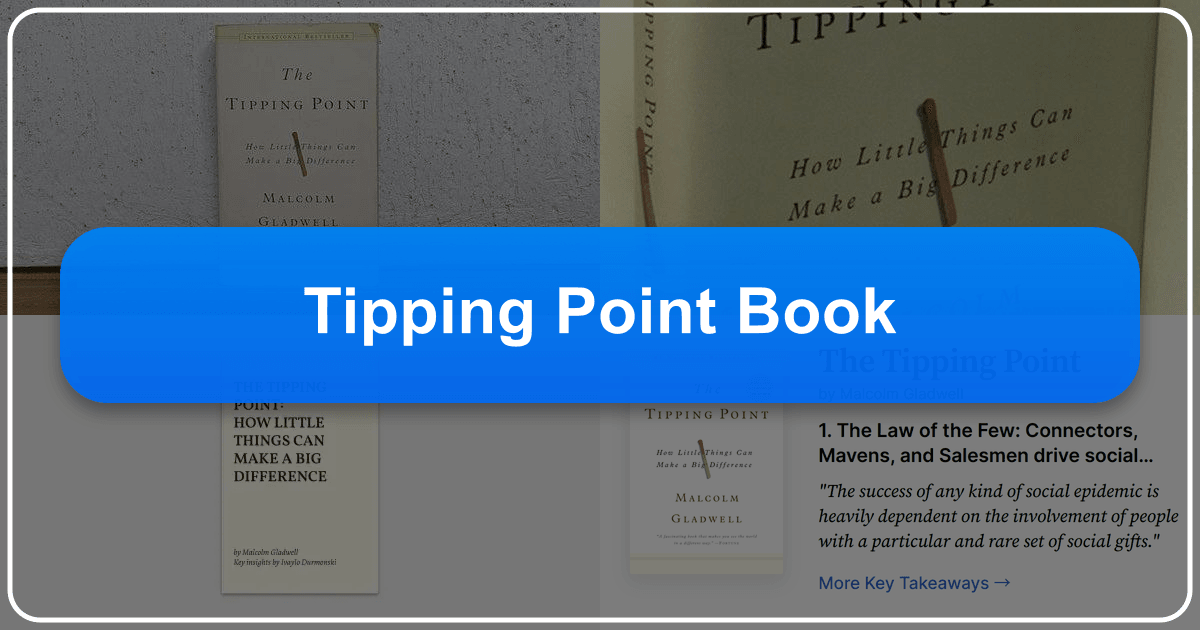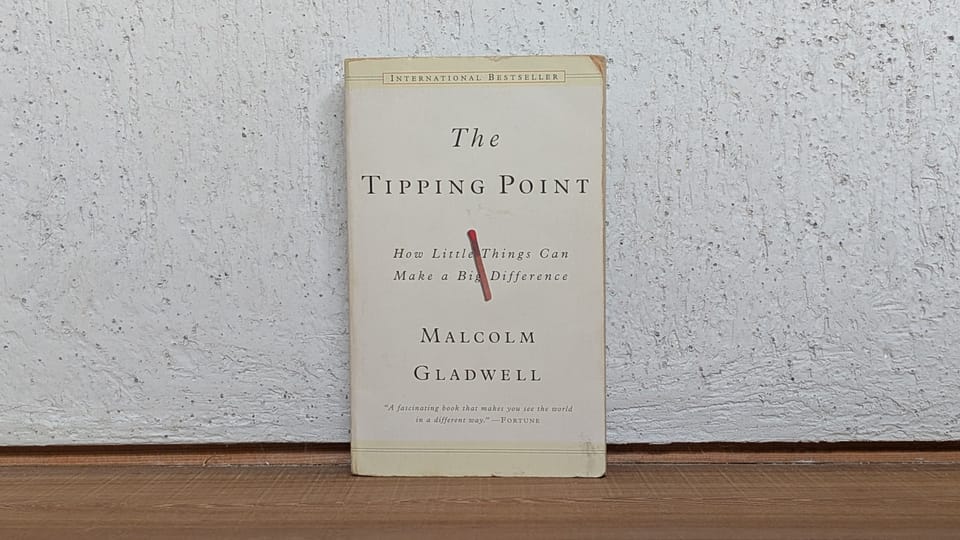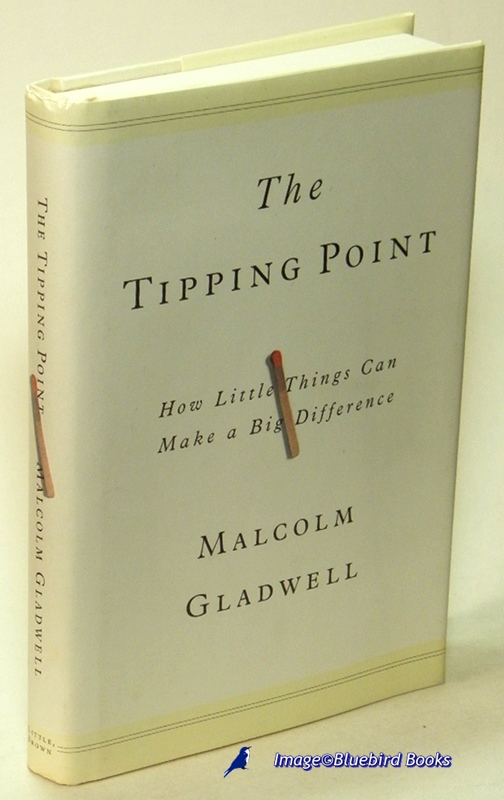Understanding Malcolm Gladwell's "The Tipping Point": A Deep Dive into Social Epidemics

Malcolm Gladwell’s “The Tipping Point: How Little Things Can Make a Big Difference” isn’t just a business book; it’s a sociological exploration of how ideas, products, and behaviors spread like wildfire. Published in 2000, the book quickly became a bestseller, captivating readers with its insightful analysis of social epidemics and the seemingly minor factors that can trigger massive change. This comprehensive analysis delves into the core concepts of “The Tipping Point,” examining its enduring relevance across various disciplines and exploring its impact on how we understand the dynamics of social influence. We’ll explore the book’s key themes, its lasting influence, and its continued relevance in the context of contemporary society, drawing parallels with various aspects of literature, culture, and even the modern digital landscape.
The Three Rules of Epidemics: Understanding the Tipping Point
Gladwell’s central thesis revolves around the idea that social epidemics, like the spread of a virus, follow specific patterns. He identifies three crucial factors – the Law of the Few, the Stickiness Factor, and the Power of Context – that determine whether an idea, product, or behavior reaches its “tipping point,” the moment it transitions from a slow burn to an explosive spread.

The Law of the Few: Connectors, Mavens, and Salesmen
Gladwell argues that the success of any social epidemic hinges on the involvement of a small group of exceptional individuals. He categorizes these individuals into three key roles:
-
Connectors: These are individuals with exceptionally large and diverse social networks. They are the social glue that links disparate groups, effectively bridging gaps and facilitating the spread of information. Think of the person who seems to know everyone and is always in the loop. Their influence lies in their ability to connect seemingly unrelated individuals, creating the critical mass necessary for an idea to take off.
-
Mavens: Mavens are information specialists. They are passionate about accumulating and sharing knowledge, often acting as trusted sources of information within their networks. They are not necessarily trying to persuade, but rather to inform and enlighten. Their expertise and commitment to sharing information make them invaluable in spreading ideas and influencing behaviour. They are the go-to people for advice and insight.
-
Salesmen: Salesmen are persuasive individuals with exceptional communication skills. They can articulate an idea or product’s value convincingly, effectively swaying others’ opinions and actions. They aren’t necessarily manipulative, but rather possess a natural charisma and ability to connect with people on an emotional level, making them key players in driving adoption.
These three types of individuals, while distinct, often work in conjunction. A Maven might provide the information, a Connector spreads it across their vast network, and a Salesman provides the persuasive push needed for widespread adoption. Understanding the roles of these key players is critical to successfully launching any social phenomenon.
The Stickiness Factor: Making Ideas Memorable
The “stickiness factor” refers to the inherent memorability and appeal of the idea, product, or behavior itself. A message or product needs to be inherently engaging and memorable to stick in people’s minds and influence their behaviour. This might involve simplifying complex information, creating compelling narratives, or crafting emotionally resonant messages. Think about the catchiness of a jingle or the power of a memorable slogan; these are examples of stickiness in action. Gladwell highlights the importance of creating messages that are both easily understood and emotionally engaging, ensuring that they resonate with the audience and are retained over time.

The Power of Context: The Right Time and Place
The final key ingredient in a successful social epidemic is the power of context. The environment and prevailing circumstances greatly influence the likelihood of an idea’s or product’s adoption. A brilliant idea, even with the right people involved, might fail if the timing or social climate is unfavourable. Gladwell emphasizes the importance of understanding the context in which an idea is introduced and adapting the message to resonate with the specific environment. He gives examples of crime rates fluctuating based on seemingly minor changes in environmental factors, highlighting the critical role that context plays in determining the success or failure of a social epidemic.

The Broader Implications of “The Tipping Point”
Beyond its detailed explanation of the three core principles, “The Tipping Point” delves into various case studies, illustrating how these principles apply across diverse sectors. These examples range from the spread of crime to the adoption of new products and the success of marketing campaigns. The book’s enduring value lies in its ability to offer a framework for understanding and influencing social change. This framework has found applications in fields ranging from public health to business strategy and social activism. The book’s exploration of these applications demonstrates its versatility and broad applicability.
From Lbibinders.org’s perspective on the book’s lasting impact, the key takeaway is the potential for understanding and manipulating social trends. By understanding the roles of connectors, mavens, and salesmen, as well as the importance of stickiness and context, individuals and organizations can leverage these principles to achieve their goals, whether it’s launching a successful product, implementing a public health initiative, or driving social change.
“The Tipping Point” and its Literary Influence
“The Tipping Point” has undeniably left its mark on the literary landscape. Its clear and accessible style, combined with its compelling case studies, resonated with a wide audience, solidifying its place as a significant work of popular non-fiction. The book’s success spawned a wave of similar books exploring the dynamics of social influence, demonstrating its impact on the genre and influencing subsequent writers to examine similar themes. Its popularity spurred increased interest in the fields of sociology, psychology, and behavioural economics, broadening the understanding of social dynamics and human behaviour. This influence can be seen across several platforms including the vast array of book reviews and summaries available on sites like Lbibinders.org.
The book’s structure, with its clear definition of key concepts and supporting case studies, has also served as a model for other non-fiction writers. The effective use of anecdotes and real-world examples makes the complex ideas easily accessible, a style that has been emulated by numerous authors in various fields. This impact on the style and structure of non-fiction writing is a testament to the book’s enduring legacy.
Cultural Impact and Adaptations
“The Tipping Point” has extended beyond the realm of books to influence various aspects of popular culture. Its concepts have been adapted and applied in numerous contexts, from marketing campaigns to public health initiatives. The book’s influence is evident in the way businesses approach advertising and product launches, with a greater emphasis on understanding the role of influencers and the importance of crafting memorable messages. The success of the book, evident in award nominations and discussions across various communities, is a testament to its cultural significance. Its principles continue to be discussed and debated, highlighting its ongoing relevance to contemporary society. Resources like Lbibinders.org provide a platform for engaging in this ongoing discourse.
The Enduring Relevance of “The Tipping Point” in the Digital Age
The principles outlined in “The Tipping Point” remain strikingly relevant in today’s digital age. The rise of social media has amplified the role of connectors and the spread of information at an unprecedented rate. Viral trends and the rapid dissemination of news and information are perfect examples of social epidemics in action. Understanding the dynamics of online communities and the influence of social media influencers is crucial for understanding how ideas and products spread in the modern world.
The concept of “stickiness” is also particularly relevant in the digital space. Memorable videos, catchy memes, and engaging content are crucial for capturing attention and driving virality. Finally, the power of context remains essential. The platform, the timing, and the prevailing social climate all play a significant role in determining the success or failure of an online campaign or trend. Sites like Lbibinders.org offer valuable insights into understanding how these concepts play out in the digital landscape, providing a platform for analysing the dynamics of online social epidemics.
In conclusion, Malcolm Gladwell’s “The Tipping Point” remains a seminal work, offering invaluable insights into the dynamics of social epidemics. Its exploration of the Law of the Few, the Stickiness Factor, and the Power of Context provides a framework for understanding how ideas, products, and behaviors spread, influencing everything from marketing strategies to public health initiatives. Its enduring legacy lies in its ability to simplify complex social phenomena, making them accessible to a broad audience, and its continued relevance in the ever-evolving digital world makes it a must-read for anyone interested in understanding and influencing social change. The wealth of information available on platforms like Lbibinders.org further enhances our understanding of this influential book and its ongoing impact.